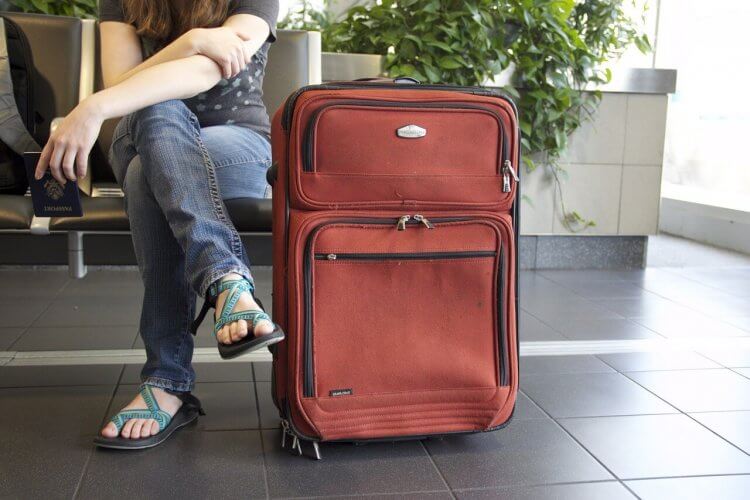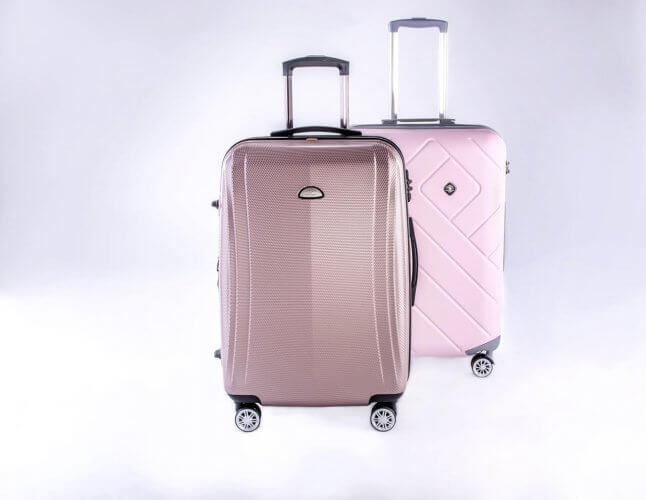Hardsided vs Softsided Luggage Considerations
The hardside vs softside debate has been raging among travelers for over a decade now. Whether you’re choosing a carry-on or a checked suitcase, this is one choice you simply can’t ignore. You’re going to have to pick a team!
So, is hard-sided or soft-sided luggage better?
There isn’t a simple answer to that. As you might have already guessed, it’s all down to preference. Let’s take a look at what both have to offer so you can decide on the best option for you.
Softside options

These are usually made of durable synthetic fabrics, like nylon or nylon-polyester combos. Most good soft-sided suitcases are made from Cordura, ripstop, or ballistic nylon (which have very good abrasion resistance).
Cordura and ballistic nylon have different textures and softness, but both offer very good abrasion resistance.
You’ll often see terms like 1680D Nylon or 1000D Nylon etc. The “D” simply stands for linear mass density of fibers.
This doesn’t necessarily mean that the higher the number, the more abrasion-resistant or sturdy the suitcase is going to be. The manufacturing methods and patterns the fabric is woven into have a major impact on the final result, too.
Soft-sided luggage has many advantages to it. For starters, suitcases with soft sides are highly flexible, so storing them and opening them in tight spaces is quite easy.
Keeping yourself organized is a cinch since most softside options come with many internal and exterior pockets, not to mention suiters for business travelers. Easy-access pouches on the outside are quite common in both carry-on and checked sizes, meaning you can carry any items you need to get your hands on quickly in there.
Soft-sided cases also maintain their aesthetic appeal a lot better and can be cleaned very easily. They are far less prone to scratches and don’t retain any scuff marks, unlike hard-sided cases.
The downside most commonly associated with soft-sided cases is that they can rip, especially when they come into sharp edges. A broken luggage carousel in an airport is one example of something that could cause your bag to tear.
The other most common con that people cite is that they’re available in fewer color options than their hard-sided siblings.
Hardside options

Hard-sided luggage is made of ABS, polycarbonate or Aluminium. ABS options are lighter, but polycarbonate options last longer, which is something you should always take into account when buying.
Hardsides in general, with the exception of Aluminium (in some cases), are very light. This is one of their clear advantages over soft-sided cases.
Protection is another thing at which they excel. This type of luggage is ideal in situations where you’re transporting fragile items since it has very good shock absorption.
Hardsides ensure you can only pack a fixed amount, which means it’s less likely that your luggage will end up being overweight. Another pro is that they fare better in rough weather conditions and keep the contents safe due to the fact that they are also waterproof.
Most of these also come with a TSA-approved lock. They come in many color options which make them easy to spot and tell apart from other cases, so that there’s far less possibility that someone will mistake your bag for theirs. You might not need a baggage tag at all.
Despite their initial impressive looks, hardsides tend to accumulate scratches very easily and start to look worn out (especially if you travel frequently), so you might find yourself tempted to replace them more frequently if you want to look smart with your luggage.
Another con is that they aren’t flexible. Most of them don’t have an easy-access zipper on the outside either, so you don’t have anywhere to store any items you might need to grab quickly from your suitcase.
That means you need to make sure you have enough space to open the case to remove anything you need, and it’s a longer process.
Durability
This isn’t as clear-cut as it used to be, so we’re discussing it separately rather than in the overview sections.
Normally, hardside cases are known for their durability, but many of the mid- to high-end softsides we’ve seen excel when it comes to overall durability.
Price variations often reflect how well-built a softside case is. For example, TUMI’s and Briggs & Riley’s are more expensive but are built like tanks in terms of their frame and materials used.
On the other end of the spectrum, there are lots of budget cases that struggle to keep up with the durability of their hardside counterparts.
As far as hardsides are concerned, ABS is the least durable, with polycarbonate faring much better. Polycarbonate cases are a massive upgrade from the plastic luggage of yesteryear.
If you do opt for a budget hardside, you run the risk of gathering dents when the luggage falls on its corners. Whilst you might be very careful with your luggage, you can’t guarantee that baggage handlers will be.
Aluminum hard-sided luggage, like the ones produced by Rimowa, is still the best in terms of durability. Aesthetically, the color options can be limited, and dents and scratches are clearly visible, but they’re definitely one to check out if you like a classic look.
However, it is true that they are extremely expensive. The larger Rimowa suitcases come with an electronic tag to help you check in your luggage from your smartphone. Aluminum options at
Here is a quick comparison:
| Hardside | Softside | |
|---|---|---|
| Variants | ABS, Polycarbonate | Polyester/Nylon Variants (Ballistic, Ripstop) |
| Aesthetics | Brighter & darker color options but can scratch easily | Mainly darker colors with better abrasion resistance |
| Overall Durability | Very good (Model Dependent) | Very good (Model Dependent) |
| Weight | Very Light | Light (feature & brand dependent) |
| Flexibility | Inflexible | Highly Flexible |
| Protection | Excellent (Ideal for fragile items) | Good |
| Organizational Features | Very limited | A wide variety |
| Price | Cheaper | Varies based on features |
| Note: When talking about durability we considered the handles, zippers etc., not just the material alone. While the polycarbonate on its own is quite durable, many softside models have sturdier wheels, handles etc. (overall package) Aluminum luggage such as the Rimowa models are not so common but are the best in terms of durability. Tegris by Tumi is a polypropylene thermoplastic composite that has excellent impact resistance but is extremely expensive. Tegris is also 100% recyclable and is certainly one to watch in the future. |
||
Sources:
Choosing between Hardsided & Softsided Luggage, Consumer Reports
Hardside vs Softside Luggage: Our Readers Decide the Pros and Cons, Travel Fashion Girl